A patent is a document issued by an Intellectual Property Office certifying that a specific invention belongs to a third party. This patent prohibits any other person or company from commercially exploiting the invention for 20 years. Many inventors have reservations about protecting their innovation, and hesitate to apply for a patent. These obstacles are often preconceived ideas about patents, and here’s why.
Contents :
- Patenting is expensive
- Filing a patent is complicated.
- Patent application = grant of industrial property title
- I can file a worldwide patent.
- I have a patent, I can exploit it freely.

1. Patenting is expensive
Yes and No. Registering a patent costs a minimum of €273, corresponding to the official INPI registration fees. However, it is strongly recommended that you consult an Industrial Property Attorney for the drafting of the patent application. And that’s where costs rise.
Industrial property attorneys are experts with dual or even triple skills, combining a scientific degree, legal studies and often an MBA to understand global strategic issues. He or she is therefore relevant in technical, administrative and legal terms.
Support for patent applications.
Today, however, there are a number of ways in which both individuals and companies can apply for a patent.
For individuals :
The only known assistance to date is from the Fonds régional d’aide à l’innovation (FRI) which, in certain cases, can provide financial support to the inventor. In such cases, the FRI covers up to 80% of the cost of drafting and filing a patent application, and sometimes even of thepatentability study.
For legal entities :
Most of the aid is intended for legal entities, particularly SMEs.
- PASS PI: this aid is designed to encourage companies to protect their innovations. PASS PI can cover 50% of the firm’s fees for drafting the patent application.
- SME FUND: this assistance is intended to cover part of the costs of patent registration.
- INNOV’UP: this BPI France grant can cover
- FRI: as in the case of individuals, the FRI can cover up to 80% of the costs of a patent application filed by an industrial property firm.
If we do a quick simulation :
- Drafting and filing of a patent application by a YesMyPatent patent attorney experienced in simple mechanics: €3,000 ex VAT + €273 INPI fees
With the help of the FRI :
- 20% to be paid by the inventor/filer, i.e. €774.60 incl. VAT for drafting and filing a patent application in France
2. Filing a patent is complicated.
No. Filing a patent application is complicated for someone who is not in the business.
The CPI and its years of study and experience are a first asset for drafting an application that has every chance of being granted. But the administrative filing itself should not be overlooked either.
To register a patent, INPI requires :
- a very particular formalism
- professionally designed drawings
- an abstract
- claims
- a description
- tags, etc.
Working through an Industrial Property Office makes the process easier, since the people in charge of patent administration are well versed in this field. These filing professionals also hold a special diploma known as the Certificat d’Aptitude Brevets (C.A.B).
With the support of intellectual property experts, you can protect your invention with peace of mind.
3. Patent application = grant of industrial property title
No. Patent filing is a linguistic shortcut. In fact, we should be talking about the filing of a patent application. The patent application is then examined by the Examiner of each National Patent Office. At the end of this examination, the Examiner decides whether to grant or reject the patent application. If the decision is positive, the patent is granted.
In France, this examination-to-issuance procedure takes around 27 to 30 months.
4. I can file a worldwide patent.
Yes and No. A world patent is a term used erroneously to designate an international patent application. Bear in mind that a patent is a national title, not an international one.
The world patent is usually an international extension of the priority patent application. It is also known as the PCT (Patent Cooperation Treaty), after the treaty signed by the 156 member countries to date. It is generally found with a number such as WO2022/XXXXXX in patent databases.
This ” world patent ” provides virtual protection in 156 countries. At the end of the 30 months following priority filing, the applicant must designate the countries in which the patent application will be examined. And potentially, one day, granted.
5. I have a patent, I can exploit it freely.
No. Having a patent means having the right to prohibit a third party from producing and marketing your invention. It’s not the right to do.
Having a patent means that the patent claims covering your invention are new and inventive. However, it doesn’t mean you can exploit it in its entirety.
It may happen that one or more features of your innovation are themselves protected by one or more subsequent patents still in force.
For example:
- Mr X discovers the paracetamol molecule and files a patent on it. The patent was granted in 2000. Monsieur X can now market a tube of paracetamol.
- Mr Y discovers that the paracetamol molecule is a good treatment for headaches. He filed a patent on this application of the paracetamol molecule. The patent was granted in 2015. Mr. Y can market an empty tube of paracetamol to treat headaches.
Result:
- Neither Mr X nor Mr Y can market a tube of paracetamol for headaches.
- If Mr Y wants to sell a tube of paracetamol for headaches.
Then there are two solutions:
- Negotiate a licensing agreement for the use of the molecule discovered by Mr X for the remaining years of the patent,
- wait for Mr X’s patent to enter the public domain.
It is therefore essential to have a freedom-to-operate study carried out by an intellectual property consultancy before marketing a product. This crucial step ensures that you are not infringing any prior patents.
This is a common document requested at fund-raising events from Series A upwards.
